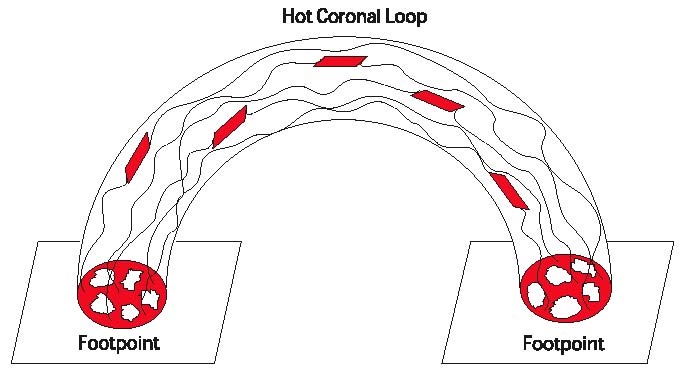
Kittinaradorn, R., D. Ruffolo, and W. H. Matthaeus, Solar Moss Patterns: Heating of Coronal Loops by Turbulence and Magnetic Connection to the Footpoints, ApJ, 702, L138-L142 (2009) (ADS)

(click on the image for a larger version)
Date: 2011 October 14
Update: 2019 November 24
The solar "moss", for those not familiar, is the term used to describe the image texture, in the EUV, of regions that turn out to correspond to high pressures in the corona. Thus its presence serves as a kind of coronal barometer. But what gives it its characteristic structure, which the mossy pioneers likened to the spicule forest? One possible answer is right here in this paper, and in its simple and yet purposefully colored cartoon. But why rust red as opposed to moss green? It seems basically to be the Parker picture of braided fields (see also the Jokipii illustration).
The authors propose that the discrete current sheets, as Parker argues must be there in an MHD description, connect to patchy features at the footpoints. That seems reasonable, though the authors seem to want heat sources in current sheets, whereas it is clear from the X-ray observations that the heat is distributed generally throughout the coronal volume, with no direct evidence for the lumpiness that might suggest the existence of current sheets (or nanoflares).